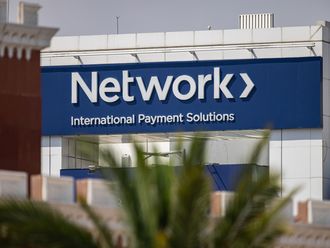Remittance flows play a very important role in the economic development of any country, and nowhere is this more the case than in developing countries.
Robust remittance inflows build foreign exchange reserves, help alleviate poverty and drive investment and consumption. They also improve credit worthiness of the recipient countries by giving them a dependable source of foreign exchange which is counter cyclical.
For instance, in 2015, global remittances totalled US$601 billion, with US$441 billion going to developing countries. India and China were recognised as the top remittance destinations, accounting for about 30 per cent of this pie.
Recent data by the World Bank suggests that approximately 3.5 per cent (250 million) of the world’s population live outside of their home country as migrants and workers — with the number set to increase further.
And whilst the USA continues to be a hot spot for migrants and expatriates, the UAE now ranks fifth, just after the Saudi Arabia, Germany and Russia.
The country’s popularity with expatriates is reinforced even further, when one looks at the number of total expatriates relative to citizens — here, the UAE (88 per cent) is only second to Qatar globally.
It is therefore unsurprising to learn that the UAE plays an important role as one of the top remitting countries, ranking sixth globally.
In 2015, UAE residents remitted in excess of US$30 billion, with ‘UAE — India’ being the top corridor (India receiving US$12 billion, almost half of the outflow), followed by Pakistan (US$4.7 billion), Philippines (US$3.5 billion), Bangladesh (US$2.7 billion) and Egypt (US$1.9 billion).
Growth
Despite the economic slowdown driven by a decline in oil prices and conflict in the region, remittance outflows from the UAE have continued to grow.
The weakening of various currencies against the US dollar has benefited expatriates, with higher exchange rates encouraging more people to remit funds overseas.
A report recently published by the World Bank found that the refugee crisis across the Middle East and European regions has not disrupted the remittance flows as feared.
On the other side of the coin, there has been no indication of increased activity either — a trend that both the World Bank and the IMF predict will change in 2017.
In order to do so however, there are challenges that will need to be overcome. For instance, the cost of remitting funds still remains a big issue for this industry. The global average for remittance fees currently stands at 7.4 per cent, far above the 3 per cent target set by G20.
While the UAE has made impressive strides in developing disruptive technologies and arrangements for low cost remittance, bringing down the average to just 3.1 per cent, many corridors still suffer from costs of up to 20 per cent (especially African and South American regions).
Rising cost
The recent changes in the rules for cross-border transfers, as well as increased measures to combat money laundering, mean that the cost is poised to increase.
One possible solution for these issues is continued digitisation — in other words, the promotion and implementation of new technologies for safer and faster transfers. Currently the thrust for the digital innovation in the industry is more towards faster and almost immediate remittances. In addition, the ability to trace the status of the funds is also a major emerging convenience.
The number of countries offering real time intra-country funds transfer is increasing rapidly. This has made the instant cross-border small ticket remittance on your mobile a reality.
With increased convenience, speed, safety and lower fees, the remittance business is becoming more efficient. And as new technologies like crypto currencies and block chain become mainstream, the next few years look to be exciting for the global remittance industry.
Rohit Garg is Head of Business Banking, Remittances, Deposits and Mortgages at Mashreq











